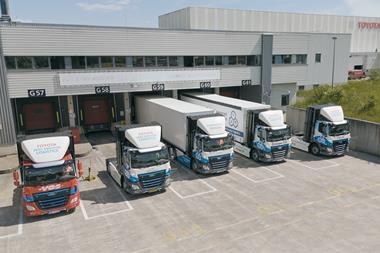 Latest analysis from the UK’s Freight Transport Association (FTA) shows that there has been a drop in the shortage of drivers of large goods vehicles (LGVs) across the UK but at the same time highlights how dependent the sector is on drivers from the European Union (EU).
Latest analysis from the UK’s Freight Transport Association (FTA) shows that there has been a drop in the shortage of drivers of large goods vehicles (LGVs) across the UK but at the same time highlights how dependent the sector is on drivers from the European Union (EU).
The report, entitled The Driver Shortage: issues and trends, puts the current shortage of drivers at around 35,500, near what it was back in 2012 (35,200). That is a significant drop from the high of almost 70,000 in 2013 and the shortage has been declining since then by about 10,000 a year.
According to the FTA data, which was prepared by research firm RepGraph, the total number of LGV drivers now in employment is just short of 315,500. Of that figure, the number from the EU is 31,542 – an increase of more than 6,400 on last year and 13,300 on 2012. Around 11% of van drivers are also non-UK nationals with around 9% (just over 22,000 drivers) from the EU.
The FTA said the recruitment challenge for vehicle operators was far from over, with only 530 unemployed truck drivers claiming benefit in August 2016, meaning that there was no pool of qualified drivers on which employers could draw. This is especially like to cause problems at peak times, such as in the run-up to Christmas.
While the research does not break down the figures by industry sector served, it shows how current uncertainties over Brexit could impact on the logistics sector as a whole.
FTA deputy chief executive James Hookham (pictured) said: “The report highlights the industry’s reliance on EU nationals, with more than 30,000 – 10% of the entire [LGV] driver workforce – currently employed in the UK.
“The uncertainty about their employment rights and status, once Britain leaves the EU, is a major concern for businesses,” continued Hookham. “We urge the government to ensure its Brexit negotiations afford special status to logistics and allow for this employment to continue so that the industry is not hit by another driver shortage crisis.”
What is more encouraging is that the report showed the average age of drivers taking their practical LGV test in the UK in the year to the end of March was 34 (compared with an average age of 48 among the overall truck driver population).
The number of women taking the practical test has remained constant since 2008 at 6-7%, though their pass rate, at 58%, remains better than that of their male colleagues (55%), showed the report.


































